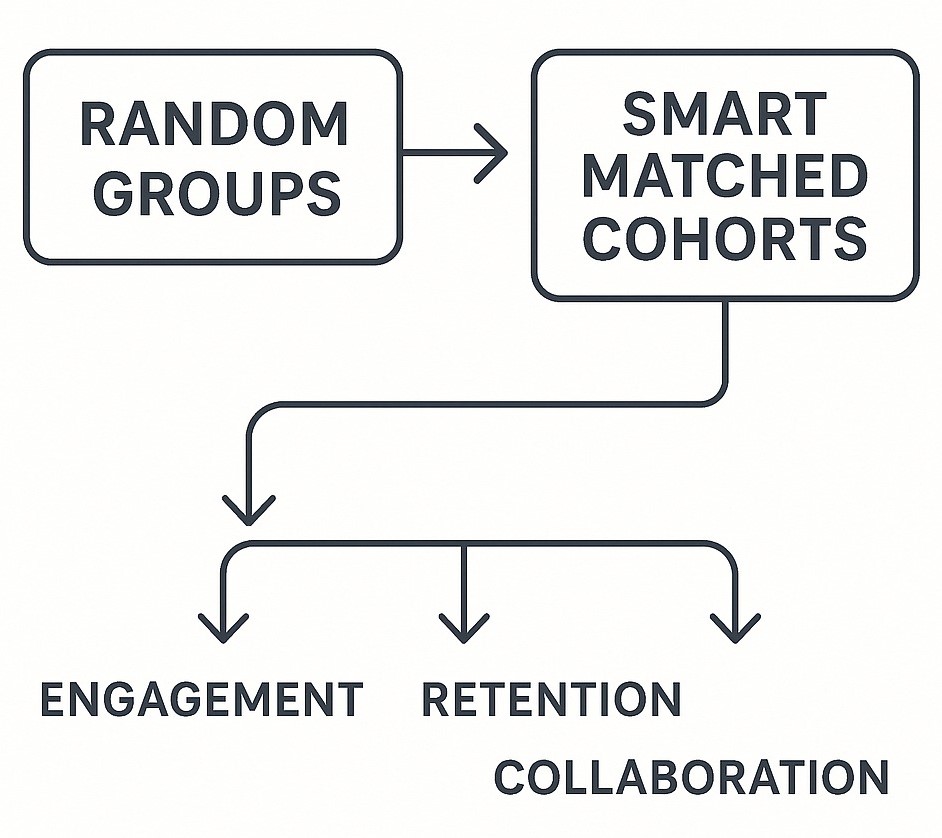Cohorts That Click: Optimizing Learning Groups with AI Matching Technology

In education and professional training, the strength of a group often defines the success of its learners. Too often, learning cohorts are formed randomly or based on surface-level factors like availability, leading to mismatched expectations, uneven participation, and weak collaboration. But with the rise of AI-driven solutions like Easy Pairing, group formation is evolving into a precise process that ensures cohorts truly click.
When students or professionals are matched intentionally, they don’t just learn together; they thrive together. AI makes this possible by analyzing compatibility traits, aligning goals, and fostering an environment where collaboration becomes effortless.
The Challenge with Traditional Cohorts
Traditional learning groups face common pitfalls:
- Uneven skill distribution: Some members dominate while others disengage.
- Clashing work styles: Fast-paced learners paired with slower, methodical ones can lead to frustration.
- Misaligned goals: A student aiming for mastery may not align with peers focused on passing quickly.
These mismatches can discourage participation, diminish learning outcomes, and reduce retention in both academic and corporate programs.
Smarter Cohorts Through AI Matching
Easy Pairing takes a different approach by leveraging AI to assess deeper factors beyond availability. The technology evaluates traits such as:
- Study preferences (independent vs. collaborative)
- Motivation drivers (career advancement, subject mastery, or certification)
- Schedule compatibility
- Skill balance (ensuring no one learner dominates or lags behind)
By analyzing this data, Easy Pairing forms cohorts where members complement rather than conflict with each other. This creates a foundation for long-term engagement and shared accountability.

Benefits of Optimized Learning Groups
Smartly matched cohorts provide benefits for both learners and institutions:
- Higher engagement: Participants feel seen, valued, and motivated to contribute.
- Improved retention: Balanced groups help learners persist through challenges.
- Stronger collaboration: Cohorts click because their skills and goals naturally align.
- Scalable success: Institutions can apply AI-powered matching to hundreds or thousands of learners without losing personalization.
The difference is evident in both academic settings and workplace upskilling programs. By ensuring each learner is part of a group where they belong, Easy Pairing drives outcomes that generic group formation cannot achieve.
Scaling Success Across Learning Environments
Whether in higher education or corporate training, smart matching scales seamlessly. For example:
- Universities can create balanced study groups for large first-year classes, reducing drop-out risks.
- Corporate training programs can design peer cohorts for leadership development, ensuring complementary strengths.
- Professional certification courses can enhance collaboration among geographically diverse learners.
By adapting to context, Easy Pairing ensures cohorts remain optimized regardless of group size, discipline, or geography.

The Future of Learning Cohorts
The shift toward AI-powered matching is more than a convenience; it’s a necessity for modern education. As learners juggle competing demands, ensuring they’re part of a cohort that supports, motivates, and inspires them is key.
Easy Pairing redefines what it means to form learning groups by turning randomness into intentionality. The result? Cohorts that don’t just exist but click, driving measurable improvements in learning outcomes and satisfaction.
In summary: With Easy Pairing’s AI technology, learning cohorts are no longer left to chance. By aligning skills, goals, and compatibility, organizations can form groups that foster collaboration, accountability, and growth, creating cohorts that truly click.